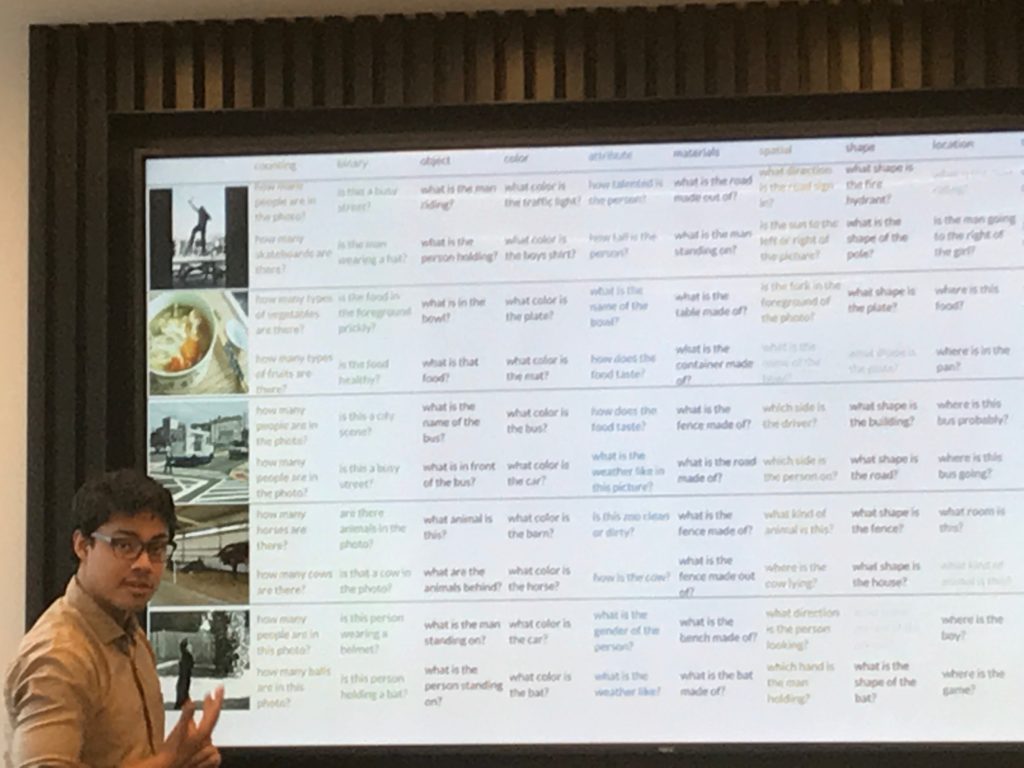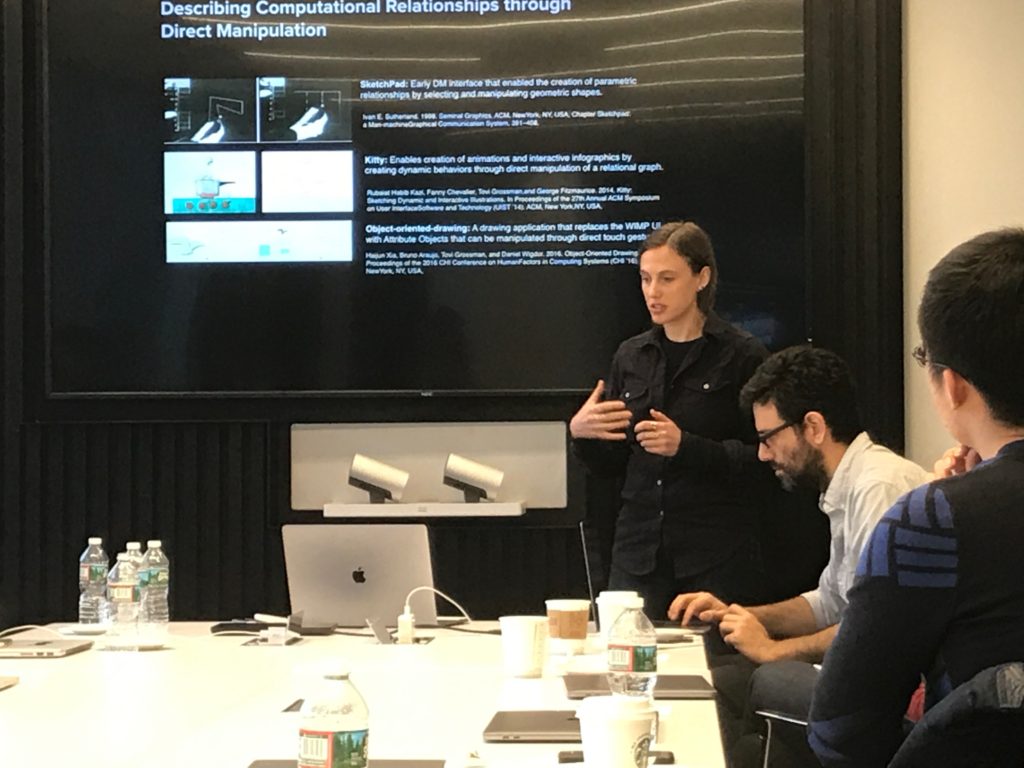Last week was the six-month mark since the most recent batch of Magic Grants were awarded to the 2018-2019 cohort of journalists, technology researchers, and media experts. On Friday the 8th, the group met for their second “All-Hands” meeting of the year.
It’s a fun and interesting event for our Magic Grantees. As its name suggests, our All-Hands meetings engage both the Stanford and Columbia halves of Brown — grantees and fellows quickly form small groups whose projects are facing similar technical or reporting hurdles. As with most Brown events, the diversity of expertise among those awarded Magic Grants is staggering, ranging from seasoned journalists to machine learning practitioners to policy and legal experts. What unites them is the common desire to advance storytelling and journalism through original technology development.
Applications are now open for 2019-2020 Magic Grants — Learn more about the program and apply here!
The projects are often creatively ambitious, telling stories in entirely new ways. One such project is starting with a meticulously assembled database — a hard reporting exercise that is trying to balance the cold logic of a spreadsheet and the nuances of lived experience. The team led by Alejandra Ibarra Chaoul, a recent graduate from the Journalism School, is recovering and archiving the work of the 100 or so journalists killed in Mexico since 2000. These are painful stories, but these journalists’ efforts are quickly disappearing as news outlets disappear. Chaoul’s work is a mix of methods, from oral history to detailed internet investigations.
Many Magic Grant projects, on the other hand, have technical aspirations that will affect how we create media. One project outlined a new algorithmic framework for eliciting specific knowledge from humans about social media images, decreasing the gap between human and machine understanding of what it means to have a social interaction. Another team reported on their computational analysis of over 1.5 million hours of TV news, asking questions about the gender balance of anchors across CNN, FOX, and MSNBC, and moving towards an ability to systematically investigate network video coverage. The project started simply enough — “What if we analyzed a bunch of TV news?” Will Crichton asked, “Whose stories are being told and how are they being told?”
Some of these projects are complete with detailed mathematical formulations of their algorithms, to be presented at conferences like AAAI later this year. Others are focused more on the specific storytelling applications of new technology, like Columbia School of Social Work professor Courtney Cogburn’s 1000 Cut Journey, a VR experience that puts people into the receiving end of directed racism. She talked about the offboarding experience—some people cry or need to talk after taking off the headset—with an energy that communicates the empathetic possibilities of VR.
If the projects this year are connected to each other, it’s in the way that they address social challenges that arise when people use computers in new ways, for journalism, storytelling, and communication. This year, a handful of projects are tackling the challenge of building databases that visualize and report on sensitive, human-centered trauma. Teams have spent the last six months poring thought into how designers and builders avoid reducing a multifaceted story to a single row or cell in a database, or pixel in a chart. To this end, Sarah Stillman and a team of investigative journalists are developing When Deportation is a Death Sentence, an immersive trove of documents, emails, and other media that tells the story of individuals who have been killed or harmed during deportation. There is no official mechanism to track the results of deportation from the US, so they have to work individually with lawyers and family members to retrieve documents that paint a larger picture of government-inflicted trauma. The work can uncover deeply troubling stories — “This is the hardest reporting job of my life,” Stillman commented, standing in front of a portion of her database during her presentation.
Some projects focus on bringing new computational tools to the creative process, such as Jane E and Ohad Fried’s Artistic Vision, which helps photographers line up visually striking shots by displaying smart overlays on the camera screen. The project might empower novice photographers and citizen journalists to increase the quality of their shots, or offload a mental workload from professional photographers to let them concentrate on higher-order artistic decisions. They demoed a video of how their tool might work; lines appearing as the photographer aligns the horizon according to the rule-of-thirds, and disappearing as objects arrayed along a table no longer look aligned.
Jennifer Jacobs, who is also working on creative computational tools, showed off her recent academic work in merging symbolic programming with the visual arts, discussing her new considerations about the role ‘debugging’ plays in programming. She described how debugging might be extended to the artistic process via the direct manipulation of computer-generated visual structures.
And there was so much more. The event this year was hosted by Reuters in a boardroom on the 30th floor of their building in Times Square. We thank Reg Chua, Jonathan Leff and Padraic Cassidy for their hospitality. We are grateful for the space and for the description of their own newsroom innovations — we were treated to a talk from Padraic Cassidy describing some of their work in automation in their “Cybernetic Newsroom.” The event finished back at our stomping grounds in Pulitzer Hall with a talk by John Kelly, co-founder of Graphika. He reviewed the work behind his report to the Senate Intelligence Committee on Russian intervention in the 2016 election.
We look forward to continuing with these projects and seeing how the grantees solve the outstanding challenges in reporting and technology they still have ahead. Our next All-Hands meeting is in May at Stanford.
If you are interested in media innovation and have an idea you think would make a good Magic Grant, we are currently applications for our next round of funding. Applications are due April 8th with information sessions coming up this week. Learn more about the program and apply here!










